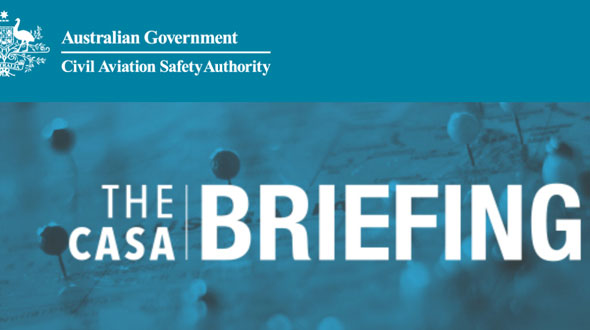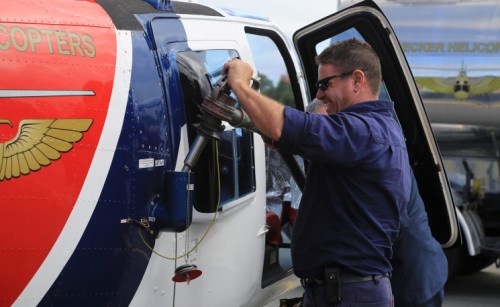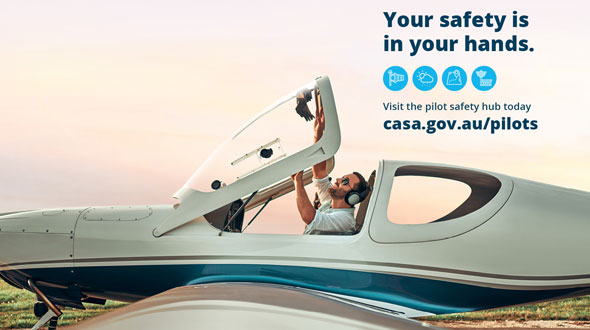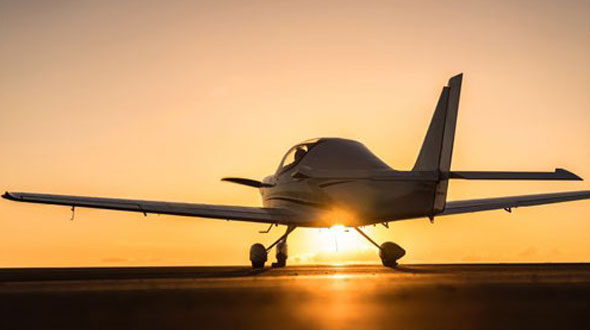Article supplied by CASA
Director of Aviation Safety, Pip Spence
Getting young people interested in aviation and developing the expertise of those already in the industry is crucial to the wellbeing of our sector.
Every incentive helps so I was pleased to be able to announce at the recent Safeskies conference in Canberra that we are offering a new scholarship program for safety managers.
These are people who play a crucial role in maintaining our safety record and we will be offering 3 scholarships worth up to $5000 each to help them increase their knowledge and skills through professional development.
We are encouraging safety managers who are committed to the development of a healthy aviation safety culture to apply.
More specifically, we are looking for people with a minimum of 2 years’ industry experience who use their initiative and display a high standard of aptitude and leadership.
They must also be working in a key aviation position, or have worked in one previously, and if you’re in this category I would encourage you to apply.
We believe this this a great opportunity to help successful individuals build their aviation expertise in the same way our engineering scholarships have benefitted promising Aircraft Maintenance Engineers (AMEs).
We announced 5 recipients of the engineering scholarship at the Rotortech Conference in May this year. We received more than 100 high-quality applications and the winners from Queensland, New South Wales and Western Australia demonstrated a commitment to achieving the highest professional standards in their chosen fields.
| First alphanumeric aircraft registration marks out nowThere’s more than a Spring change in the air with the arrival of Australia’s new alphanumeric aircraft registration marks. The first release of 1500 new marks went live on 23 September 2022 and was necessary because the existing registration system had reached its limit. Read more |
| Aviation medical consultation attracts big responseThe summary of consultation on our proposal to simplify and modernise our approach to medical certification has been published. We received more than 600 responses to the consultation. The feedback received has been grouped into 5 themes. Read more |
| Read our latest RPAS advisory circularAn updated version of the Advisory Circular 101-01: Remotely piloted aircraft systems, licensing and operations is now available. Changes to the document reflect updates that have been made to drone regulations and the supporting manual of standards over the past 12 to 24 months. Read more |
| Update on Mallacoota AirportReintroduced instrument flight procedures at Mallacoota Airport are expected to come into effect on 3 November. We’ve been working closely with Airservices Australia and the East Gippsland Shire Council to re-introduce instrument flight procedures as soon as possible. Read more |

| Readers recommend Flight Safety Australia!Almost 95 per cent of Flight Safety Australia (FSA) readers would recommend the magazine to others. We survey the readers of our flagship aviation safety magazine every 2 years to gain insights that allow us to measure its impact on safety and behaviour. Read more |
| Have your say on control tower visual surveillance systemsWe’re proposing changes to air traffic services standards to enable electro-optical technology such as video cameras to be used for aerodrome control services. This will involve amending the Civil Aviation Safety Regulations Part 172 Manual of Standards to allow visual surveillance systems (VSS) to be used at air traffic control towers, including remotely controlled facilities. Read more |
| FAA expands rotor blade checks on Robinson helicoptersAn Airworthiness Directive (AD) covering tail rotor blade cracks on certain Robinson helicopters has been superseded by a new version that covers R66 models and a wider range of blades. The US Federal Aviation Administration (FAA) released FAA AD 2021-19-08 last year requiring operators to check blades for cracking on some R44 and R44 II models. Read more |
| Discover how we ensure safety with a new airlineEver wondered what’s involved in approving an Air Operator’s Certificate (AOC) for a new domestic airline? We’ve outlined some of the steps we go through to ensure a new operator meets Australia’s stringent aviation safety standards. Read more |
| Deadline approaches for medical records move to myCASADon’t forget to sign up to myCASA or review your login details before we move our online Medical Records System (MRS) later this month. We are moving MRS to sit within the myCASA portal to make more of our online services accessible from the one place. Read more |
| CASA Wings Awards on againWe’re continuing our support of Australian Flying’s CASA Wings Awards through our sponsorship program. The program aims to improve and raise awareness of the importance of aviation safety for the benefit of the wider aviation community. Read more |
| New AvSafety seminar: Mitigating risks at non-controlled aerodromes CASA’s aviation safety advisors will soon be flying into your community to deliver our latest safety seminar for pilots: Non-Controlled Aerodromes: Manage Your Risks. You’ll hear about all the hazards of a non-controlled aerodrome – and listen to a vivid real-world case study of how things went wrong. Read more |
| Experts discuss accident investigationJoin our expert panellists as they analyse a collision on runway at Caloundra Airport in Queensland, involving a light aircraft and a helicopter. See a visual recreation of the accident and the radio calls that led up to the non-fatal accident. Our expert panel will discuss what was going on and their own flying experiences. Read more |
| Upcoming webinars: Loss of situational awareness in the circuitExpand your piloting skills with our next online webinar series: Loss of situational awareness in the circuit. Using real life examples, our industry experts and experienced pilots will help you build your situational awareness and learn how to consider decisions and workload while flying. Register today for seminars on Tuesday 4 and 11 October. If you’ve missed any of our previous webinars, you can catch up via our YouTube channel. |









